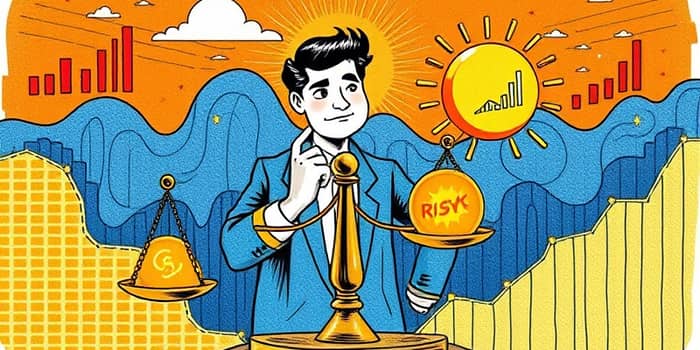
Every business decision presents a crossroads of potential gains and losses. Learning to measure both sides of the equation transforms uncertainty into strategic advantage. In today’s fast-paced world, organizations and individuals who master this skill can seize the most promising paths while sidestepping costly pitfalls.
From launching new products to exploring fresh investments, the core of success lies in understanding the variables that drive outcomes. Only by conducting a rigorous assessment can you align actions with goals and long-term vision.
At its heart, risk and reward analysis is a structured evaluation of possible outcomes. The method weighs negative consequences—risks—against positive returns—rewards—to guide data-driven decision-making and planning. By translating abstract prospects into quantifiable metrics, you gain clarity and confidence in your choices.
This process mitigates emotional bias and enables teams to balance uncertainty and seize opportunities. It ensures resources—capital, talent, and time—are directed toward initiatives with the best long-term potential.
Applying the right tools can transform complex data into clear guidance. Consider integrating the following frameworks to enhance your analysis:
With modern software and AI-driven platforms, you can automate data collection and scenario testing, enabling continuous monitoring and agile adaptation as conditions evolve.
Concrete examples illustrate how disciplined risk-reward evaluations unlock growth and resilience:
• A manufacturing firm expanded its product portfolio after mapping supply-chain vulnerabilities against projected sales. By investing in secondary suppliers and hedging raw-material costs, they minimized disruptions and achieved a 15% revenue uplift in the first year.
• A technology company weighed the strategic acquisition of a smaller rival. Through rigorous financial modeling and alignment with its corporate governance and accountability in decision-making framework, the company realized significant market share gains and a 20% increase in shareholder returns.
• Individual investors allocate assets—stocks, bonds, and real estate—based on personal risk profiles. By adhering to a disciplined approach, many achieve their target returns while staying within predefined loss limits.
No analysis is immune to obstacles. Awareness of these pitfalls can help you avoid missteps:
Overcoming these challenges requires diligence in data collection, stakeholder training, and the establishment of clear review processes.
To elevate your risk-reward evaluations, adopt these proven strategies:
By institutionalizing these approaches, teams develop operational, financial, market, and regulatory risks comprehension that strengthens organizational agility.
Evaluating risk and reward on every new opportunity is more than a process—it is a mindset that empowers leaders to navigate uncertainty with clarity. By combining structured frameworks, real-world data, and a culture of ongoing review, you can transform unpredictability into competitive advantage.
Embrace this disciplined practice to allocate resources strategically, foster sustainable growth, and build resilience against tomorrow’s challenges. In doing so, each decision becomes a stepping stone toward enduring success.
References













